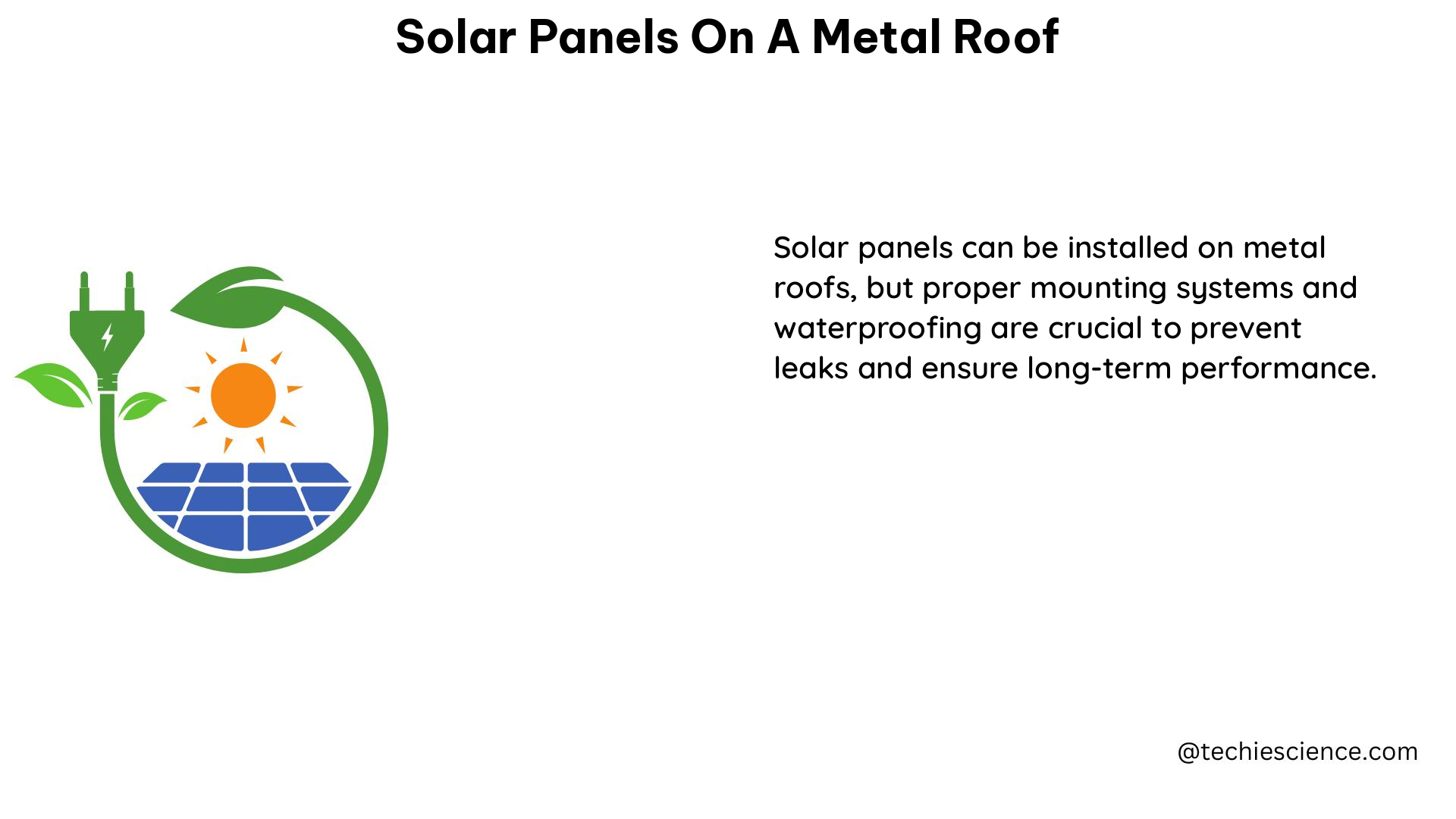Solar panels can be installed on metal roofs, offering several advantages. Metal roofs are lightweight, durable, and fire-resistant, making them an ideal base for solar panels. The installation process is also simpler on metal roofs, especially if they have a standing seam design, as the racking system can be clamped directly to the roof seams without the need for drilling holes. This type of installation is also less likely to void the roof warranty, as opposed to traditional shingle or tile roofs which require penetrating mounts and bolted connections.
Benefits of Solar Panels on Metal Roofs
-
Durability: Metal roofs are known for their exceptional durability, with a lifespan of 40-70 years, which is significantly longer than traditional asphalt shingle roofs. This makes them an excellent choice for supporting solar panels, which have an average lifespan of 25-30 years.
-
Fire Resistance: Metal roofs are inherently fire-resistant, providing an added layer of safety for solar panel installations. This is particularly important in areas prone to wildfires or other fire hazards.
-
Energy Efficiency: Metal roofs can help improve the energy efficiency of a building by reflecting solar heat, reducing the need for air conditioning and lowering energy costs. When combined with solar panels, this can lead to even greater energy savings.
-
Minimal Wind Losses: Studies have shown that solar panels installed on metal roofs experience less than 1% yearly loss in performance due to wind, compared to roof-mounted PV panels. This is due to the minimal wind coming from the back of the panels.
-
Simplified Installation: The standing seam design of many metal roofs allows for a simpler installation process, as the racking system can be clamped directly to the roof seams without the need for drilling holes. This can reduce installation time and costs.
Technical Specifications of Solar Panels for Metal Roofs

-
Cell Technology: The solar panels used on metal roofs typically incorporate mono PERC (Passivated Emitter and Rear Cell) technology, which is widely used in the photovoltaic industry. Mono PERC cells have higher efficiency and better performance in low-light conditions compared to traditional monocrystalline or polycrystalline cells.
-
Panel Construction: The solar panels are made of Swedish-made SSAB quality metal and are coated with GreenCoat®, a premium Nordic-quality steel that is suitable for harsh weather conditions. The metal backsheet of the panels helps protect against rot, rust, splitting, and cracking, further enhancing their durability.
-
Power Output: The solar panels used on metal roofs are designed to produce the power that they advertise. Roofit.Solar, a leading manufacturer of solar panels for metal roofs, conducts rigorous power output tests on every PV module before shipping them out to ensure they meet their stated performance specifications.
-
Environmental Testing: Roofit.Solar also subjects their solar modules to thermal cycling and damp heat tests to verify their environmental safety and performance in various weather conditions. These tests help ensure the long-term reliability and durability of the solar panels.
-
Quality Assurance: In addition to power output tests, Roofit.Solar also conducts IV tests (power output measurement) and electroluminescence tests on every PV module to ensure quality and performance before they are shipped.
Mounting Systems for Solar Panels on Metal Roofs
The choice of mounting system is crucial for the successful installation of solar panels on a metal roof. There are three main options:
-
Penetrating Mounts: These mounts require drilling holes through the metal roof to secure the solar panel racking system. This method is suitable for metal roofs that do not have a standing seam design.
-
Non-Penetrating Clamps: These clamps attach directly to the standing seams of the metal roof, eliminating the need for drilling holes. This is the preferred method for standing seam metal roofs, as it is less likely to void the roof warranty.
-
Ballasted Mounts: These mounts use weight, such as concrete blocks, to hold the solar panel racking system in place without penetrating the roof. This method is suitable for metal roofs that cannot be penetrated or clamped to the standing seams.
The choice of mounting system will depend on the specific design and conditions of the metal roof, as well as local building codes and regulations.
Conclusion
Solar panels can be successfully installed on metal roofs, offering a range of benefits in terms of durability, fire resistance, energy efficiency, and simplified installation. The technical specifications of the solar panels and the choice of mounting system are critical factors in ensuring a successful and long-lasting installation. By understanding the unique requirements and advantages of solar panels on metal roofs, homeowners and solar installers can make informed decisions to maximize the benefits of this renewable energy solution.
References:
– Roofit.Solar – Solar Metal Roofs: Safe and Durable
– MarketWatch – Solar Panels on Metal Roofs
– Western States Metal Roofing – Solar Panels on Metal Roof

The lambdageeks.com Core SME Team is a group of experienced subject matter experts from diverse scientific and technical fields including Physics, Chemistry, Technology,Electronics & Electrical Engineering, Automotive, Mechanical Engineering. Our team collaborates to create high-quality, well-researched articles on a wide range of science and technology topics for the lambdageeks.com website.
All Our Senior SME are having more than 7 Years of experience in the respective fields . They are either Working Industry Professionals or assocaited With different Universities. Refer Our Authors Page to get to know About our Core SMEs.